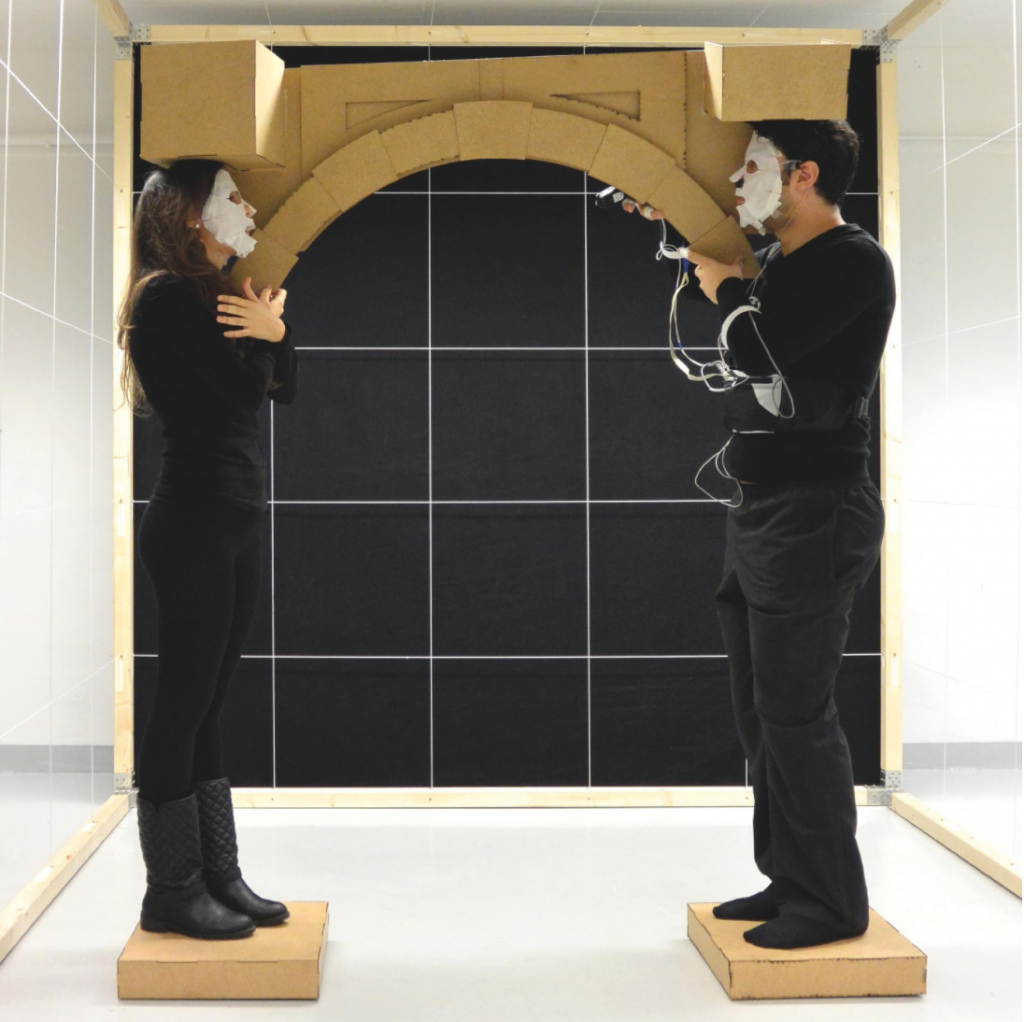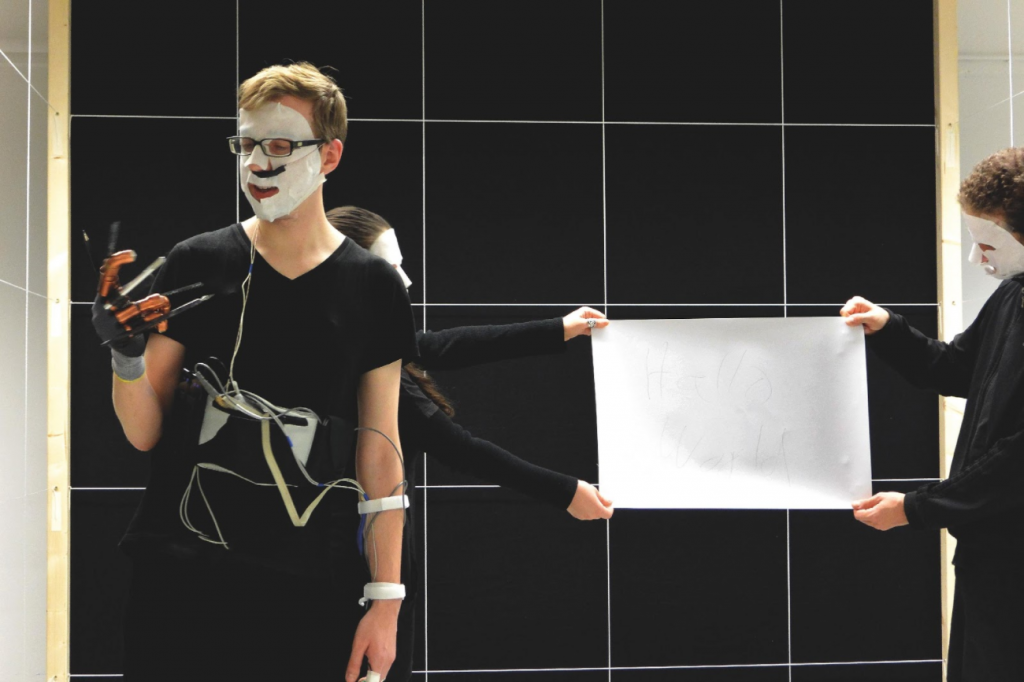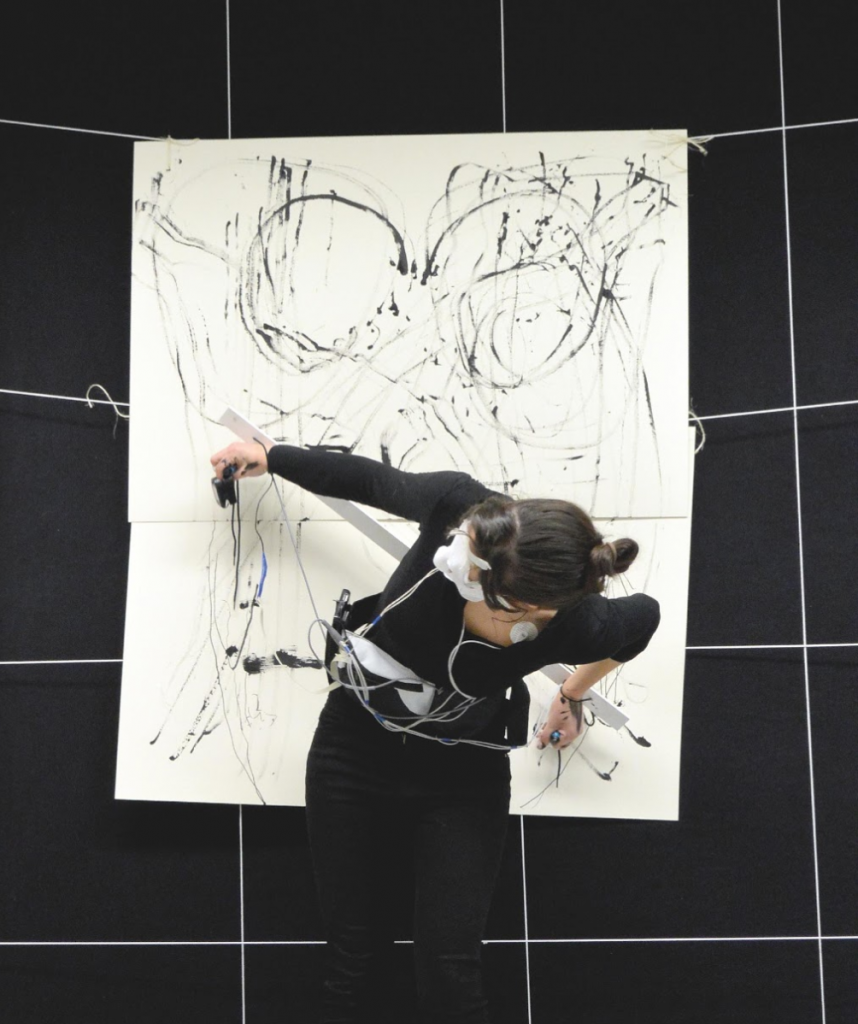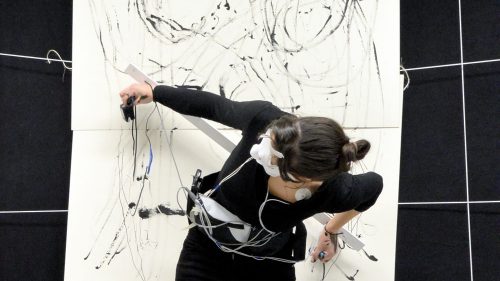The following exercise in architecture education was undertaken as part of a doctoral thesis dedicated to exploring the relationship between Body and Architecture13, in particular taking into consideration the contemporary scientific view of the body and mind as a whole, what is generally addressed as the embodied mind theory3.
Supported by experimental work, which includes methodologies from neuroscience and cognitive sciences, the thesis Embodied Emotions argues that advances in fields related to study of the brain2shouldn’t be ignored by architects, since they present the discipline an opportunity to re-think its approaches to design and teaching. The methodology it proposes is based on the embodied practices of performance art in design education, and encourages the creative participation of students in the design and fabrication of objects and 1:1 scale architectural settings. It aims to explore the affective influence of architectural space 7, and whether empathy between the user’s body its surroundings can take place.
Designed to make students aware of their own body’s relation to architectural space, experiments accompanied by seminars aimed to develop their own sensorial awareness8. Biometric sensors and questionnaires were employed, taking into consideration that the information collected was most of all important as a direct feedback on bodily states under certain conditions, and not necessarily a deterministic analysis of affect10.
The seminar on Corporeal Architecture at Fachbereich Architektur, TU Kaiserslautern and supported by the Deutsches Forschungszentrum für Künstliche Intelligenz (DFKI) explored the relationship between body and space through an embodied approach to the design process.2 Students studied two main interlocking strands: an introduction to conceptual references on artwork on the subject of the body (namely the somatic techniques of performance art), and basic notions of neuroscience4, behavioural sciences, sensorial design9, affective science6, and biometric measuring tools (skin conductance and cardiac accelerations)5. Weekly class assignments explored how the body reacts when interacting with body extensions (Fig. 2), body restrictions (Fig.3) and performing as an architectural element (Fig.1). At the end of the seminar, students were expected to perform with the objects they designed and fabricated while wearing biometric sensors, receiving direct feedback on their corporeal reactions5.
Finally, students were asked to record through questionnaires how they felt when performing as an architectural element. The experiments took place in the form of performances, and were documented on camera and film. The setting for the performances consisted of a 2.5 x 2.5 x 2.5 m cube with a visible square grid of 0.5 m on all sides, and a black background. The white grid on the walls of the cube were introduced to help students guide their performances, taking in consideration the specific location of their joints and limbs in space. The exploratory character of these experiments was influenced by the work of performance artist Stelarc, who pioneered the use of biometric sensors during his artistic performances as a way to interpret changes in bodily states, through an aesthetization of technology.

Fig. 1: Students performing the body as an architecture element
In an attempt to interpret the data collected through biometric technology , a Presence Questionnaire12, and a self-assessment mannequin (SAM) chart1 were employed to distinguish variations of physiological and psychological states. According to the parameters established within the range of SAM, we explored how a user’s affective response to design objects as “compelled or not compelled”, “positive or negative”, “aroused or not aroused” and “dominant or dominated” might show correlation with data produced by biometric sensors.
We proposed that the somatic techniques of performance art integrated with architectural design, and data gathering have potential in developing corporeal awareness, and stimulate curiosity and creativity in students and designers.

Fig. 2: Students performing body extension – The architect’s hand

Fig. 3: Student performing body restriction – Moving painter
Conclusion
We are far from being able to consciously “compose” the subjective emotional experience of architectural space. We also cannot be deterministic about the affective significance of the data collected with such biomarkers. However, neuroscience is progressing towards establishing sounder methods of translating experiences into meaningful data. Awareness of these mechanisms, we believe, is an effective tool to encourage new forms of observation and contemplation for designers. Pèrez-Gòmez, writing about Architecture as a Performing Art reminds us that the role of the architect is to provide, as best as possible, places where comfort, health, imagination and happiness might happen, and to make such spaces come to reality11. The potential of tools to extend the empathy of a designer should be carefully explored from the onset of architecture education.
References
1 Bradley, Lang, M.M., P.J. (1994) Measuring emotion: the self-assessment manikin and the semantic differential. Behaviour Therapy and Experimental Psychiatry. 25(1). pp. 49-59.
2 Damásio, A. (1999) The Feeling of what happens: Body and Emotions in the Making of Consciousness. Harcourt Books. Orlando.
3 Eberhard, J.P. (2009) Brain Landscape. The Coexistence of Neuroscience and Architecture. Oxford University Press. Oxford.
4 Gallagher, S. (2005) How the Body Shapes the Mind. Oxford University Press. New York.
5 Kim, Cho, Kim, M.J., M. E., J.T. (2015) Measures of Emotion in Interaction for Health Smart Home’. IACSIT International Journal of Engineering and Technology, 7(4). pp. 10-12.
6 Lang, Bradley, Cuthbert, P.J., M.M., B.N. (1998) Emotion, motivation, and anxiety: brain mechanisms and psychophysiology’. Biological psychiatry, 44(12). pp. 1248-1263.
7 Mallgrave, H.F. (2010) The Architect Brain: Neuroscience, Creativity and Architecture. John Wiley&Sons. West Sussex.
8 Mallgrave, H.F. (2013) Architecture and Embodiment: The Implications of the New Sciences and Humanities for Design. John Wiley&Sons. West Sussex.
9 Norman, D. A. (2004) Emotional Design : why we love (or hate) everyday things. Basic Books. New York.
10 Pallasmaa, J. (2005) The Eyes of the Skin: Architecture and the Senses. John Wiley & Sons. West Sussex.
11 Pèrez-Gòmez, A. (2012) Architecture as a Performing Art: two analogical reflections. ArchitekturNTheNorwegian Review of Architecture. webpage, p. webpage.
12 Witmer, Bob G., Singer, Michael J. (1998) Measuring Presence in Virtual Environments: A Presence Questionnaire. Presence, Vol. 7, No. 3, June 1998, 225–240. Massachusetts Institute of Technology. Cambridge.
13 Ferreira, M. P. (2016) Embodied Emotions: Observations and Experiments in Architecture and Corporeality (unpublished doctoral thesis) Faculdade de Arquitectura Universidade de Lisboa. Lisboa.

